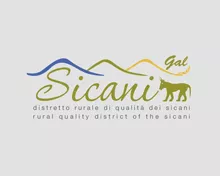General information
RDP Priority
- P6. Social inclusion and local development
RDP Focus Area
- 6B: Local development
RDP Measure
- M19: LEADER/CLLD
Beneficiary type
- Local Action Group
Summary
The Sicani LAG promoted a truly bottom-up process for strengthening local communities needing to recover their identity and trust in development. The project focused on creating Sicani Quality Rural District 'Functional Units' in each municipality through the involvement of local partnerships (local authorities, tourist and cultural associations, and local companies). Each Functional Unit aimed to create a tourist information office to promote local products and to improve the local tourist offer. The units also supported the development of new urban and suburban tourist paths and the improvement of signage across the entire district. All these activities contributed to helping tourism businesses and local farms increase their services and visitor numbers.
Moreover, each project facilitated the re-use of old public buildings and facilities that were no longer in use. In some cases, these additional recreational spaces helped increase the service provision of local communities.
Results
- The project successfully established the Sicani Quality Rural District, in which each municipality has a team of 5-6 people tasked with developing and implementing new projects.
- Around six hundred stakeholders have become members of the Sicani Quality Rural District, which is committed to promoting the bottom-up approach and building on the knowledge of rich human experiences.
Resources
Documents
Context
The Sicani LAG is located in the central-western part of Sicily, Italy. It includes 29 municipalities across the two provinces of Agrigento and Palermo. The tourism sector is a vital component of the local economies in both provinces. There was an overall impression that local communities' identity and belief in local development needed strengthening. Therefore, the LAG wished to build its Local Development Strategy on a robust basis to enhance and inspire the human resources available at the local level. To achieve this goal, the LAG embarked on an intensive approach of carefully listening to stakeholders and facilitating links between them. This engagement was considered an absolute priority and centred around an inclusive 'horizontal leadership' approach.
Objectives
The project's main objectives were to effectively empower local stakeholders regarding integrated local development. It was important to establish a self-sustaining system to mobilise local human resources and facilitate the involvement of young people, women and the disadvantaged.
The project further sought to activate new links, networks and synergies among local economic actors and to promote new partnerships between public and private actors, in order to design new development projects.
In addition, it was planned to promote the creation of walking routes and religious walks to encourage slow and sustainable activities while creating new job opportunities.
Activities
Project activities included:
- Setting up and implementing a four-step process to achieve all objectives of the project.
- Engaging and listening. The first task involved carefully listening to various local stakeholders about their needs.
- The second step involved establishing a collaboration process among stakeholders and launching a respective governance process where local actors could contribute and participate in public decision-making. In addition, the Sicani Quality Rural District was created.
- Thirdly, creating 'rural development labs' in each of the municipalities with the aim to implement co-designed local development projects.
- Finally, implementing a process of co-creating development projects.
Main results
- The project successfully established the Sicani Quality Rural District, in which each municipality has a team of 5-6 people tasked with developing and implementing new projects.
- Around six hundred stakeholders have become members of the Sicani Quality Rural District, which is committed to promoting the bottom-up approach and building on the knowledge of rich human experiences.
- Furthermore, the project funded 28 initiatives. Each initiative is implemented by a partnership of stakeholders with a focus on creating 'relational itineraries' that connect several tourist enterprises and other local economic actors. The itineraries can be viewed on the 'Sicani' app (another project led by the same LAG).
Key lessons
- Investing in the intensive and lengthy process of capacity building was worthwhile as it offered a significant return in terms of improved social innovation and increased social capital.
- The LAG's role in assisting the co-design process for new projects (in some cases with the support of the architecture department at the University of Palermo) proved highly fruitful.
- The LAG is the first territory in Sicily to apply the principles of 'Community Coaching', which further develops the philosophy of active participation. This approach brings people and resources together by following the growth of single individuals and of the community as a whole. It further supports sharing, participation, and collaboration in a constructive and aware manner. It is a path that can be summarised with three 'Ps' - process, product and people.
The LAG, with a continuous involvement of citizens, associations, companies, and local [bodies], immediately understood how the concept of participation combines - in a positive way - with that of lasting, local, tourist, social and economic development.
The LAG Sicani made residents and entrepreneurs progressively more aware and competent about participatory local development. The important task of [taking on] new habits and behaviours, more suitable to the idea of the development of the territory of Sicani was possible and will be possible only through a full involvement of the local actors, who are now in charge of their development projects and initiatives themselves. These same people are now open and willing to embrace new opportunities, thanks to the awareness of how and what these areas can become.

